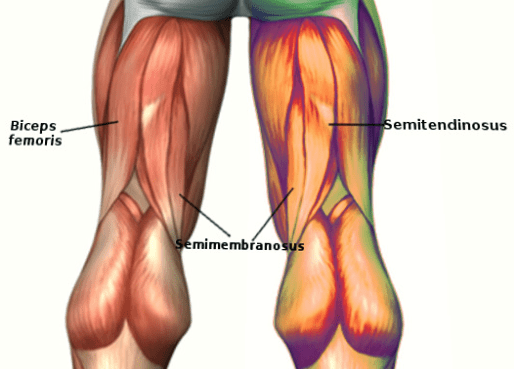Von Collins is an accomplished triathlete and endurance cyclist, and the author of four fitness and training books: Smarter Running, Your First Triathlon Guide, Fit Foods, and 30 Rut-Busting Workouts. He has been cited as a triathlon, cycling, and fitness expert by Healthline, CNET, Forbes, Eat This, Not That and other major outlets.
Cycling is a great workout, giving you an excellent cardiovascular workout without all the pounding that you get from running. But what are the big muscle groups involved when out there cranking on the pedals?
Here are the major muscle groups that are getting good work when you bike.
Muscles Used in Cycling
Quads
First, and most obvious are the quads. 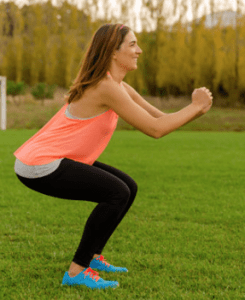
The quadriceps, or quads, are the muscles located in the front of the upper leg and are responsible for extending the leg at the knee. Your quads get great, focused work during cycling, as they are responsible for initiating every pedal stroke – perhaps tens of thousands over the course of a ride.
Quads are a primary muscle group used in cycling. When you look at an elite cyclist’s legs, the quads are usually pretty impressive.
The stronger the quadriceps, the more the cyclist can generate power and speed on the bike, and the strong quads can also help to reduce the risk of fatigue during long rides.
To make the quadriceps stronger, you can incorporate strength training exercises such as leg presses, squats, and leg extensions into their training routine. These exercises can be performed using weights or resistance bands, and can be adjusted to accommodate different fitness levels.
In addition to strength training, cycling itself can be an effective way to strengthen the quadriceps. Incorporating interval training, hill climbs, and other high-intensity efforts into your rides can help to challenge and strengthen the quadriceps muscles.
Hamstrings
The hamstrings – or hammies – are the group of muscles located in the back of the upper leg, and they are responsible for flexing the leg at the knee and extending the hip. They are an important muscle group for cycling, as they work in conjunction with the quadriceps to power the pedal stroke and help to stabilize the rider as they pedal.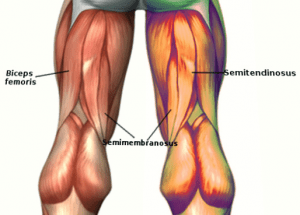
Strong hamstrings will create a better pedal stroke, as an ideal pedal stroke is a good, 360 degree one. If you use your hamstrings when cycling, you like generate more power in what feels like an easier overall stroke.
When at the bottom of your pedal stroke, your motion should feel like your are trying to scrape a piece of mud off the bottom of your shoe, with a slight pull. That pull is instigated by the hamstring.
To make the hamstrings stronger, a good exercise is a leg curl, if you have access to a machine for it. Without machines, a good hamstring exercise is the glute bridge where you lay on your back with your feet flat on the floor, and raise your glute and lower back up and down. Dead lifts are also good for the hamstrings, but don’t go crazy on the weight.
Calves
The calves, located in the lower leg, are used to help to lift the pedal. These muscles are also heavily worked during cycling as they provide an important conduit between the quads and the pedal itself.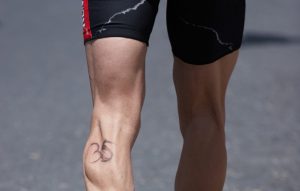
Strong calves can help a cyclist keep a strong, powerful pedal stroke, and initiate the process of pushing the stroke forward at the top, and pulling it backward at the bottom.
For strong calves, the good old calf raises are probably the best overall exercise you can do. Do them with or without weights. This will help work the muscles around your achilles as well, as we are always trying to minimize achilles injury risk.
It’s important to note that cycling is a lower body dominant sport, and it’s important for a cyclist to maintain a balance of strength and flexibility in all of the muscle groups in the lower body. It’s important to not neglect other muscle groups such as the quadriceps, hamstrings, and glutes in favor of just focusing on the calves.
Glutes
The glutes, or buttocks muscles, are used to stabilize the pelvis and help to generate power during the pedal stroke. They are an underrated aspect of cycling muscular fitness.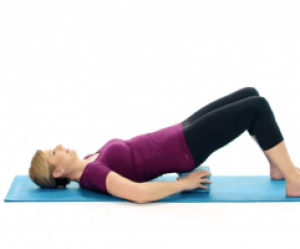
Strong glutes will help you bike longer and more comfortably, as they allow for stability on the bike and help give you extra horsepower when pedaling hard or uphill.
To make the glutes stronger, squats, lunges (with dumbbells even better), and glute bridges are all great exercises to do. Deadlifts also work great. The good news is that these are the same exercises that will help some of your other key cycling muscle groups improve.
Core
Finally, the core muscles, including the abdominals, obliques, and lower back muscles, are essential for maintaining proper posture and stability on the bike. These muscles are constantly engaged during cycling to help keep the rider balanced and upright.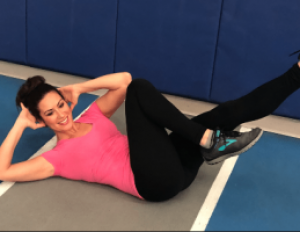
A strong core also means you have less weight on your hands and wrists while cycling, which in turn means you are going to be more comfortable in the saddle for long durations.
To make the core muscles stronger, a cyclist can incorporate core strength training exercises such as planks, sit-ups, and Russian twists into their training routine. These exercises can be performed using weights or resistance bands, and can be adjusted to accommodate different fitness levels.
What happens if my muscles are imbalanced?
Having imbalanced muscle strength can lead to issues such as muscle tightness, poor posture, and an increased risk of muscle strains or tears. It’s important for a cyclist to maintain a balance of strength and flexibility in all of the muscle groups in the lower body to help prevent these issues.
To avoid muscle imbalances, it is best to incorporate strength training exercises that target both the quadriceps and hamstrings into their training routine. It may also be helpful to stretch and foam roll the muscles that are tighter or stronger to help improve flexibility and balance. Working with a personal trainer or physical therapist can also be helpful in identifying and addressing muscle imbalances.
Doesn’t cycling work the arms and back, too?
Sure. Just not in a way that gives those muscles range-of-motion work.
While cycling primarily works the lower body muscles, it can also help to strengthen the muscles in the back and arms to some extent. The muscles in the back, including the lats, traps, and rhomboids, help you as a rider have proper posture and stability on the bike. The arms and shoulders, including the biceps and triceps, are constantly engaged as you work to control the bike.
While cycling may not be the most effective way to specifically target and strengthen the back and arm muscles because it is very static for those muscle groups, these muscles can be indirectly strengthened through cycling.
